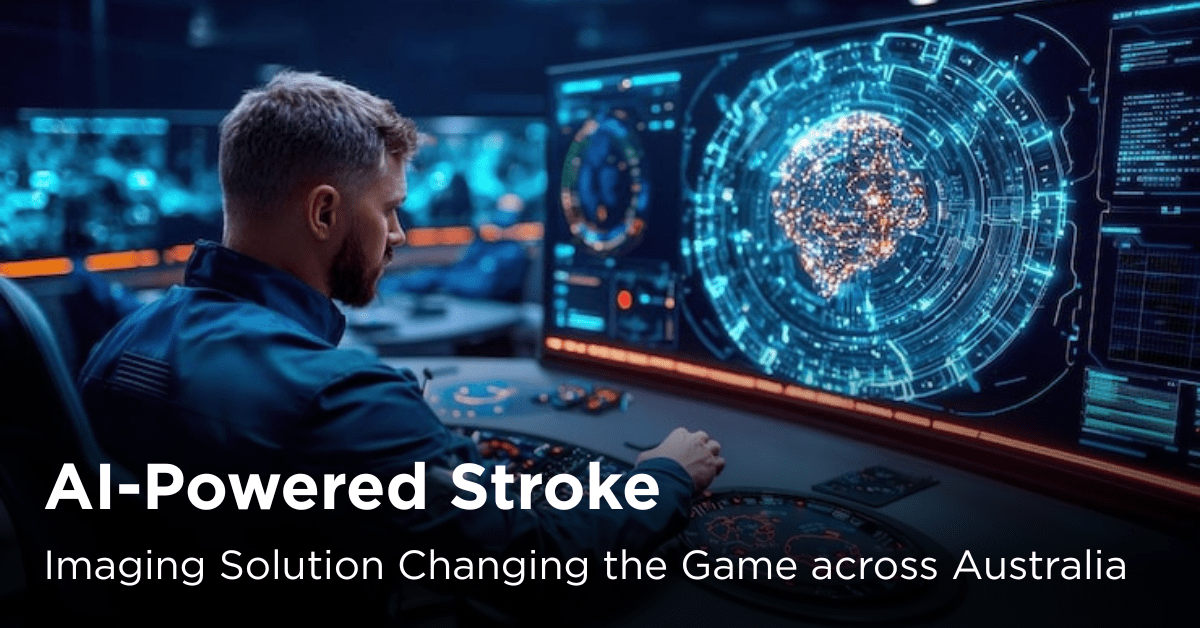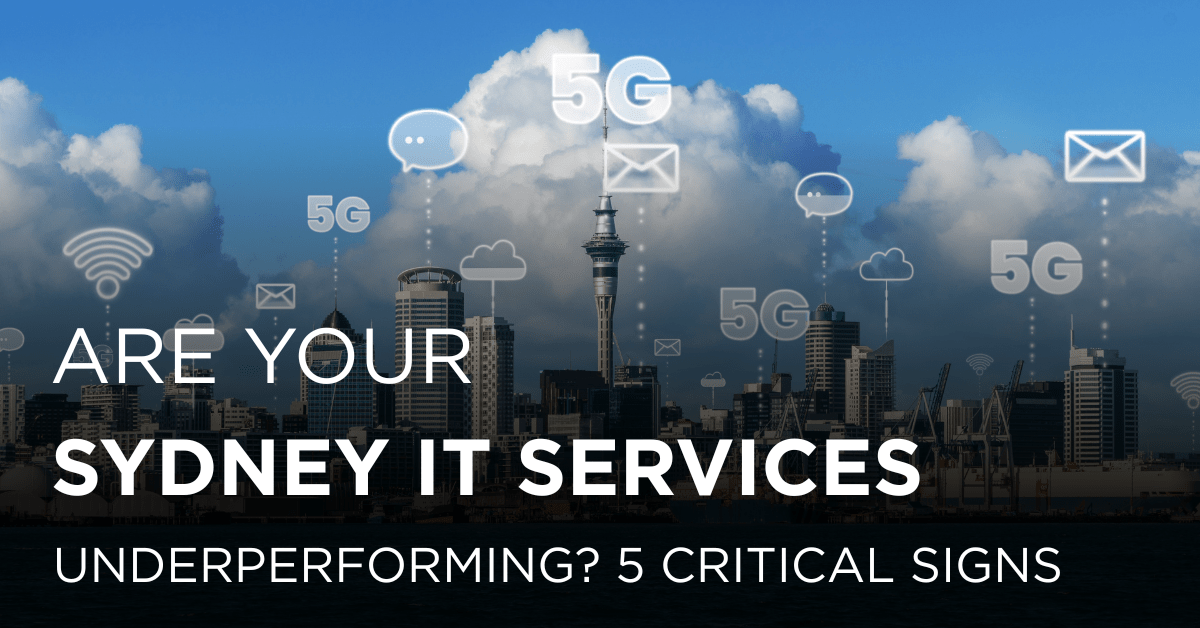Information technology is more than just a support function in today's business world, especially in…

AI-Powered Stroke Imaging Solution Changing the Game across Australia
In the high-stakes race against time that is a stroke, every minute counts. For years, Australian hospitals have relied on skilled radiologists and neurologists to interpret complex brain scans. A process that, while effective, was bound by the constraints of human speed and availability. Today, a quiet revolution is underway. AI-powered stroke imaging solutions are being deployed from metropolitan hubs to regional centres, fundamentally transforming stroke care and delivering life-altering outcomes for patients across the nation.
A Race Against the Clock in a Sunburnt Country
Stroke is a leading cause of death and disability in Australia. Hence, the treatment mantra is “time is brain,” with millions of neurons lost every minute a stroke goes untreated. The gold-standard treatment for the most common type of stroke (ischemic) is a procedure called a thrombectomy—which physically removes the clot. But to be effective, it must be performed within a narrow window.
Australia’s vast geography compounded the problem:
-
Metropolitan Delays: Even in major cities, waiting for a specialist to review scans could cost precious time, especially overnight or on weekends.
-
The Tyranny of Distance: Regional and rural patients faced a double jeopardy: first, getting to a primary hospital, and then, if a thrombectomy was needed, often requiring a complex and time-consuming transfer to a major comprehensive stroke centre. The decision to transfer itself took time, as local radiologists consulted with metropolitan specialists.
AI That Sees What the Human Eye Can Miss
Enter the AI-powered stroke imaging platform. This technology is not a replacement for clinicians but a powerful co-pilot. Integrated directly into hospital imaging systems, it analyses a patient’s non-contrast CT and CT Angiography scans in a matter of minutes.
Its core capabilities are what make it revolutionary:
-
Large Vessel Occlusion (LVO) Detection: The AI instantly flags the presence of a large, operable clot—the kind suitable for thrombectomy. It circles the location on the scan, providing an unmissable alert.
-
Core Infarction Measurement: It quantifies the amount of brain tissue that has already died (the “core”). This is a critical piece of information for determining if a patient will benefit from a thrombectomy.
-
Perfusion Mismatch Analysis (on advanced platforms): By analysing blood flow, the AI can identify the “penumbra”—the vulnerable, at-risk brain tissue that can still be saved by rapid intervention.
How It’s Changing the Game Across Australia
The impact is being felt at every stage of the patient journey:
1. Supercharging Triage in the ER
When a suspected stroke patient arrives, the AI analysis is often waiting for the doctor. Instead of starting from scratch, the clinician is presented with a pre-processed report that highlights the key findings. This slashes “door-to-needle” and “door-to-groin” times dramatically. In some Australian hospitals, this has cut decision-making time by over 50%.
2. Democratising Expertise for Regional Australia
This is perhaps the most significant change. A regional hospital in Mount Isa or Broken Hill can now run a scan, and the AI provides an immediate, expert-level analysis. Even though, this gives the local team the confidence and data to immediately activate a transfer to a thrombectomy-capable centre in Brisbane or Sydney without waiting for a specialist tele-neurology call. The patient is already “packaged for transfer,” saving hours that translate into saved brain function.
3. Creating Cohesive Stroke Networks
AI creates a common language. When a spoke hospital in a regional network sends a scan to a hub hospital in the city, the report generated by the AI is standardised. The receiving neuro-interventionalist knows exactly what they are dealing with—the clot location, the core infarct volume, and the mismatch—allowing them to prepare for the procedure even before the patient arrives.
4. Empowering, Not Replacing, Clinicians
The AI serves as a powerful second opinion. It reduces diagnostic uncertainty and helps prevent subtle findings from being overlooked under pressure. This allows Australian neurologists and radiologists to focus their expertise on complex cases and patient management, making the entire system more efficient.
Australian Landscape Nationwide Adoption
However, the adoption of this technology is accelerating rapidly. In fact, Major comprehensive stroke centres in capital cities like Royal Melbourne Hospital, Royal Prince Alfred Hospital (Sydney). And Princess Alexandra Hospital (Brisbane) were early adopters. The real success story, however, is its rollout through state health networks, ensuring that even smaller hospitals that refer patients have access to the same cutting-edge decision support tools.
For example, a patient in a regional Queensland hospital presents with stroke symptoms. A CT scan is performed. Within 5 minutes, the AI alerts the ED doctor: “Large Vessel Occlusion detected in the M1 segment of the MCA. Ischemic Core: 15ml.” The stroke team is activated, the retrieval team in Brisbane is notified with the scan report in hand, and the patient is airlifted. What used to take 2-3 hours of deliberation and coordination now happens in under 30 minutes.
Future Beyond the Acute Event
The journey doesn’t stop at the acute phase. The same AI technology is now being used to predict recovery trajectories, assess the risk of haemorrhagic transformation, and provide quantitative data for post-stroke rehabilitation planning, ensuring patients get the right care at the right time throughout their recovery.
Conclusion
In summary, the integration of AI-powered stroke imaging is more than just a technological upgrade. As well as, it is a systemic transformation of Australian healthcare. It is breaking down the barriers of distance and time, ensuring that whether a patient lives on Collins Street or in the Coral Sea. They have access to the fastest, most accurate stroke diagnosis possible. This isn’t just changing the game—it’s saving brains and rebuilding lives, one scan at a time.



